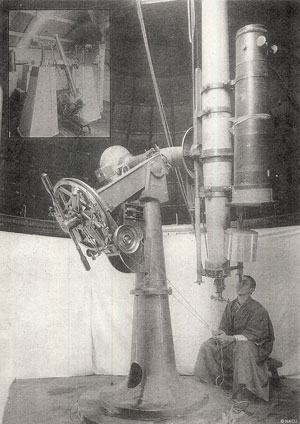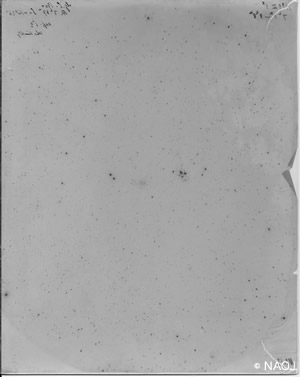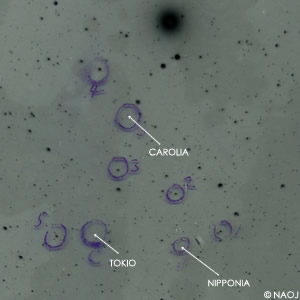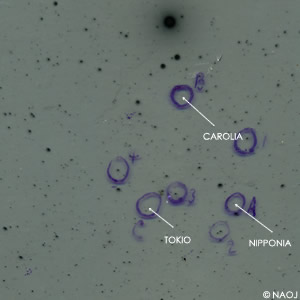March 16, 2012
Discovery of Japan’s Oldest Photographic Plates of a Starfield
Background
The Archive Office (*1) was started in 2008 as a sub-project in NAOJ’s Public Outreach Center. The main tasks of the Archive Office were preservation, archiving , effective utilization, and public display of historically important astronomical materials such as observational instruments, photographic plates, precious old books, and old documents. As a part of the Archive Office’s activity, a team was inspecting more than 20,000 old photographic plates. Surprisingly, the team discovered starfield plates that were thought to have been lost. The images were obtained with the Brashear astrograph (*2) at Azabu in the period from the end of the 19th century to the beginning of the 20th century. The total number of these old plates was 437.
Why Had the Plates Been Forgotten?
NAOJ’s former name was Tokyo Observatory at Tokyo Imperial University, which had started observations at central Tokyo, Azabu in the 19th century. However, until now, it has been believed that all the materials, plates, and instruments belonging to Tokyo Observatory were lost in the aftermath of the Great Kanto earthquake and in a fire at the Observatory’s main building.
Surprisingly and fortunately, the photographic plates were preserved in corrugated cardboard cartons. These plates dating from around 1900 were the oldest photographic plates in Japan. The size and the field of view of the plates are 253 mm X 220 mm and 12.0 degrees X10.4 degrees, respectively. We found that we were able to recognize the images in most of the plates, although the film surface of some plates is peeling off, due to poor preservation.

The Oldest Plate in Japan
The oldest plate among those for which we were able to identify the observational dates was marked No. 13 and was taken on March 5, 1899. This plate was targeted for the constellation Puppis, and the exposure time was one hour seven minutes, from 19:01 to 20:08. We found stars as faint as 14 magnitudes were actually detected in the plate.

The First Minor Planets Detected in Japan
The team also found the plates had registered images of the first minor planets “TOKIO” and “NIPPONIA” discovered by Japanese observers and named after our county. These plates were taken by Shin Hirayama (a Professor at Tokyo Imperial University) on March 6 and March 9, 1900. He marked three objects with observed positional shifts as A, B, and C. The Archive Office team calculated their orbits and identified these three objects as “NIPPONIA”, “CAROLIA”, and “TOKIO”, respectively. “CAROLIA” is also a minor planet and had already been discovered in 1885.

» View all of the plate

» View all of the plate
Position Shift of a Star Over 150 years
If there was a star with large proper motion on a plate, its positional shifts should be seen because the plates recorded starfields of more than one hundred years ago. Such an image is also important for education. By comparing a list of stars with large proper motion and the positions of the plates, the team finally found 61 Cyg (*3) on plate number 581 taken on September 5, 1910. This star is among the top ten of the largest proper motion stars. The team measured the position of 61 Cyg on the plate, and plotted its position on the star chart taken in July, 1951 at Palomar Observatory, together with the positions on the star charts taken in 1855 at Bonn and in September, 2005. This exhibits perfect alignment along the trajectory of 61 Cyg. The team perfectly reproduced the positional shifts over 150 years.

Future Work
The team is digitizing these plates to make a complete plate list for public display in the near future. These findings will be presented at the Annual Spring Meeting of the Astronomical Society of Japan, at Ryukoku University from March 19, 2012 (*4).